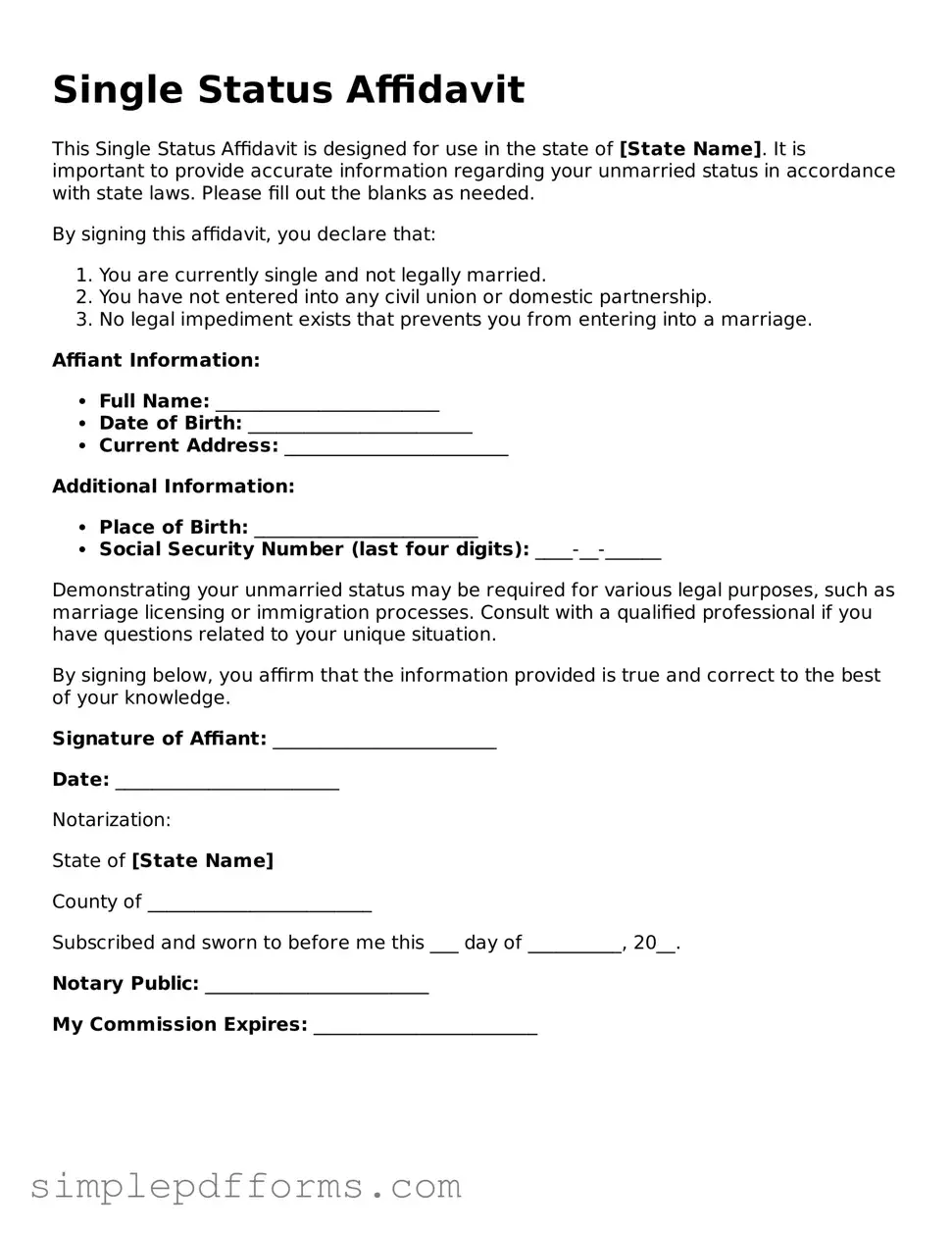Single Status Affidavit
This Single Status Affidavit is designed for use in the state of [State Name]. It is important to provide accurate information regarding your unmarried status in accordance with state laws. Please fill out the blanks as needed.
By signing this affidavit, you declare that:
- You are currently single and not legally married.
- You have not entered into any civil union or domestic partnership.
- No legal impediment exists that prevents you from entering into a marriage.
Affiant Information:
- Full Name: ________________________
- Date of Birth: ________________________
- Current Address: ________________________
Additional Information:
- Place of Birth: ________________________
- Social Security Number (last four digits): ____-__-______
Demonstrating your unmarried status may be required for various legal purposes, such as marriage licensing or immigration processes. Consult with a qualified professional if you have questions related to your unique situation.
By signing below, you affirm that the information provided is true and correct to the best of your knowledge.
Signature of Affiant: ________________________
Date: ________________________
Notarization:
State of [State Name]
County of ________________________
Subscribed and sworn to before me this ___ day of __________, 20__.
Notary Public: ________________________
My Commission Expires: ________________________
